

 |
 Hoe Lodge on the map dated 1772 of the
estate of William Helwys. He was a member of a
prominent Norwich family that had provided the City
with mayors in 1683, 1684 and 1713. At a later date
the estate passed to the Dean & Chapter of
Norwich Cathedral. Perhaps it was a bequest.
Hoe Lodge on the map dated 1772 of the
estate of William Helwys. He was a member of a
prominent Norwich family that had provided the City
with mayors in 1683, 1684 and 1713. At a later date
the estate passed to the Dean & Chapter of
Norwich Cathedral. Perhaps it was a bequest.

The extent of the farming estate is shown overlaid
on the map. It totalled just over 324 acres (131
hectares). It includes small narrow strips in the
few remaining open fields still unenclosed.
[Courtesy of Norfolk
Record Office
CHC
11901]
 Hoe Lodge on the Inclosure map of 1811,
when it belonged to the Dean & Chapter of
Norwich cathedral. One of the outbuildings is marked
as a 'malt office', a term used for a maltings,
presumably producing malt for brewing on the farm.
'Moat Meadow', the field outlined in pink, belonged
to Sir John Lombe but was exchanged in the Inclosure
to the Dean & Chapter, consolidating their
estate.
Hoe Lodge on the Inclosure map of 1811,
when it belonged to the Dean & Chapter of
Norwich cathedral. One of the outbuildings is marked
as a 'malt office', a term used for a maltings,
presumably producing malt for brewing on the farm.
'Moat Meadow', the field outlined in pink, belonged
to Sir John Lombe but was exchanged in the Inclosure
to the Dean & Chapter, consolidating their
estate.
[Courtesy
of Norfolk Record Office C/Sca/2/243]
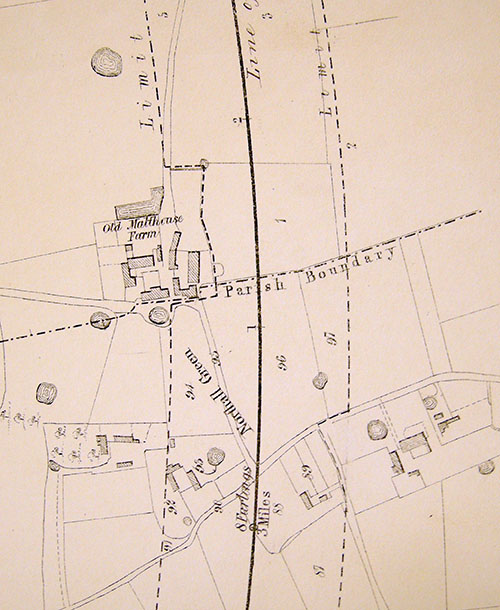
On the railway plan of 1845 the Lodge
is called Old Malthouse Farm.
[Courtesy of Norfolk Record Office
C/Scf 1/244]

A sale plan of 1853 shows the house and farm
buildings captioned as 'Mr Waters's House', etc.
Waters added the land and three pairs of cottages
being auctioned to his estate, .
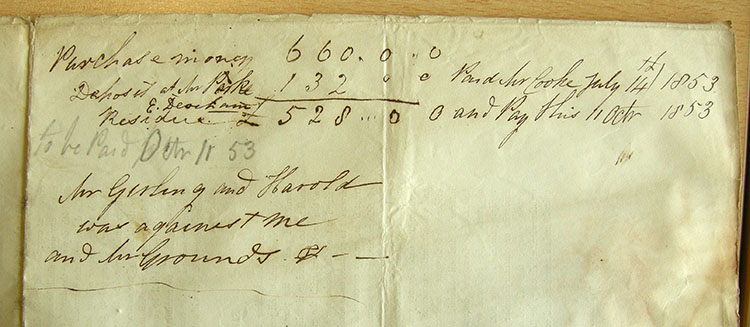
Bidding against Waters were Girling,
Harrold and Grounds (of Hoe Hall). The
purchase price was £660.0.0.
[Courtesy
of Norfolk Record Office BR 379/Hood, Vores
& Allwood, 14/03/1980/Box 39]

Hoe Lodge was for sale in July 1890
following the death of Azariah Waters, who had
farmed there since the 1850s. The sale
plan shows the house, in red, with the farm
buildings around it, and the railway close by. The
bridge built to serve the fields on the opposite
side of the track has recently been demolished for
safety reasons following the re-opening on the line
as a heritage railway. (North to the right.)
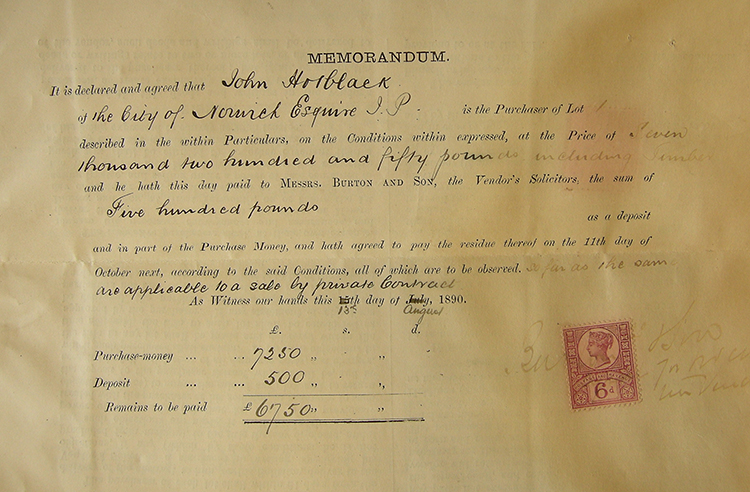
John Hotblack JP, shoe manufacturuer, Alderman and
Mayor of Norwich in 1884-5, bought the estate for
£7250. He owned farms elsewhere in the county. At
his death in 1895 he made provision for his
son-in-law Sydney Atkins to buy the farm.
[Courtesy of Norfolk Record
Office BR 379/Hood, Vores & Allwood,
14/03/1980/Box 39]
 July 1895,
the Norfolk Chronicle report July 1895,
the Norfolk Chronicle report
details his legacies including Hoe
Lodge
farm.
In the census of 1891 the farm's tenant
was Walter Vassar, but he gave notice
to
quit by Michaelmas 1895 according to
the estate valuation report held in the
Norfolk Record Office. His rent was
£300
a year.
[NRO MC 2022/32 649X6]

Vassar lost a rabbit on Sunday September 15th 1895.
By 1901 the tenant was Emily Thelwall, born in
India, aged 27 and unmarried. Miss Thelwall was
active in the parish, helping to raise money for the
church tower restoration. The Journal,
August 1907.

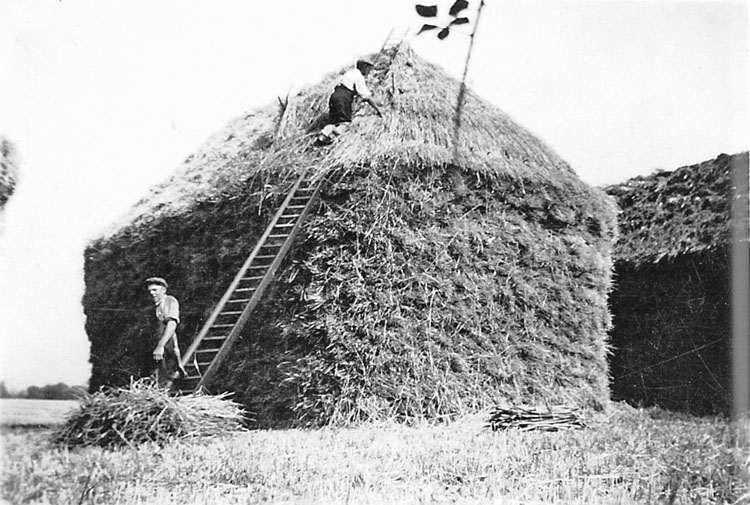
Thatching
a stack at Hoe Lodge farm. Early 1920s.
The man on the ground is Walter Herbert
Wicks and the thatcher is his father,
Herbert Lance Wicks.
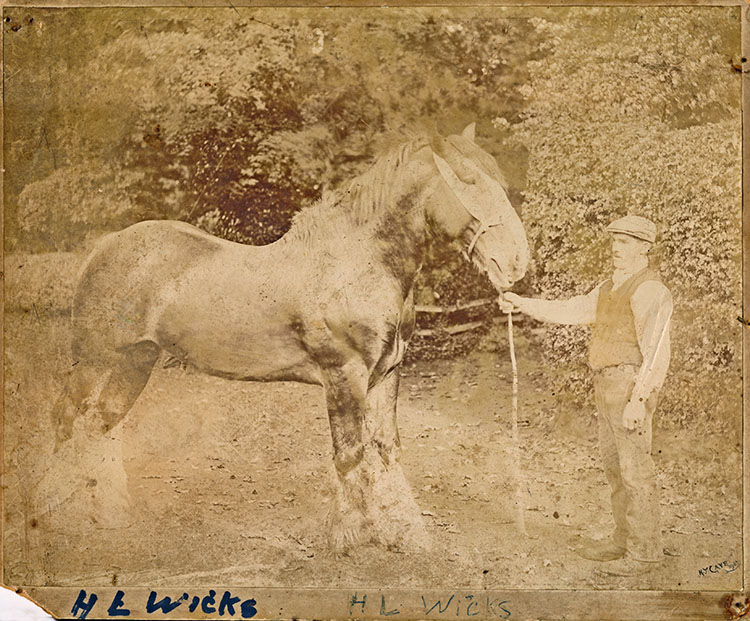
Herbert Lance Wicks photographed in 1903
by Cave of Dereham. The picture was almost
certainly intended as a portrait of the
horse! Herbert worked at Hoe Lodge and at
Quebec Hall farm and the location of this
photograph is not known.
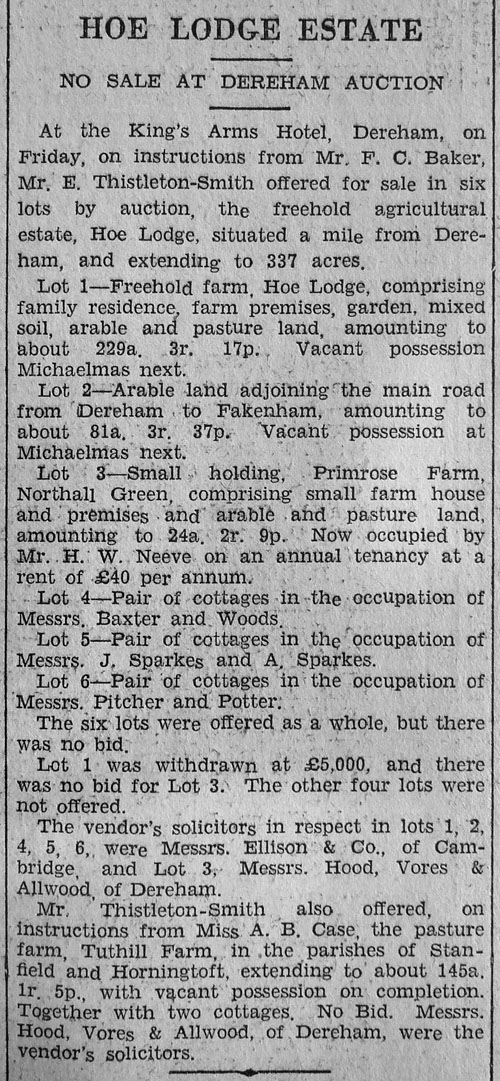 The ’thirties were a bad time for
agriculture. In July 1937
The ’thirties were a bad time for
agriculture. In July 1937
Hoe Lodge failed to sell.
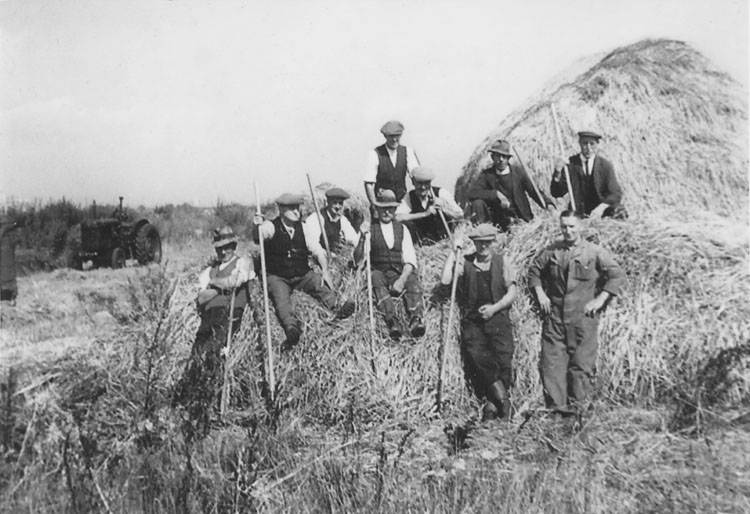
Threshing at Hoe
Lodge, 1946. Second
from the left may be
Hubert Grout and top
right is William
Lown, farm steward
at Manor Farm, Hoe.
The men are probably
from all the local
farms. Fred Dann
provided the
threshing tackle.
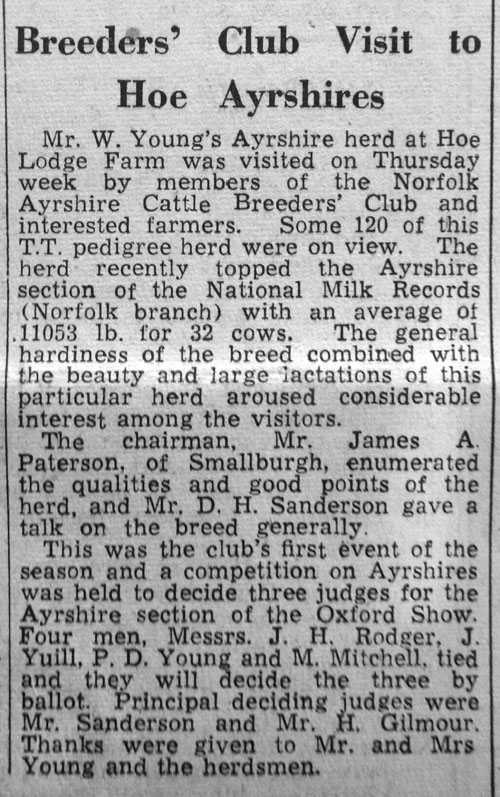 Mr and Mrs Young came from Scotland to
buy Hoe
Mr and Mrs Young came from Scotland to
buy Hoe
Lodge. Their Ayrshire
cattle came by train to
Dereham station and
were walked up Cemetery Road to
the farm. This report
is from 1950.
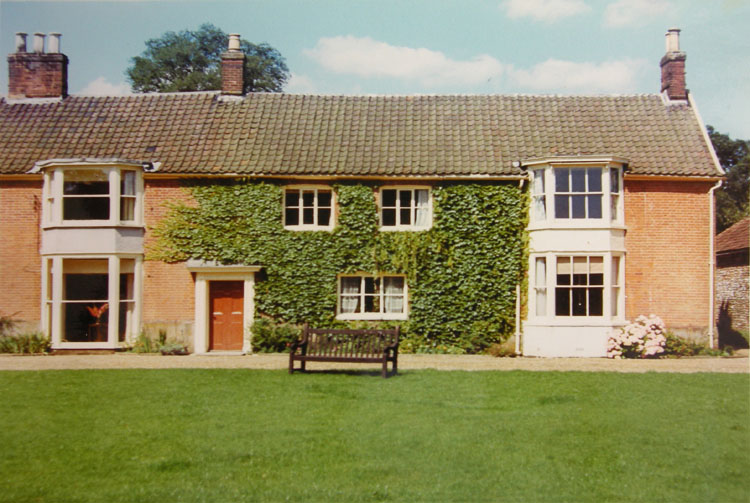
Mr and Mrs Young
brought up five daughters
here.

Mr and Mrs Young with their daughter
Agnes.
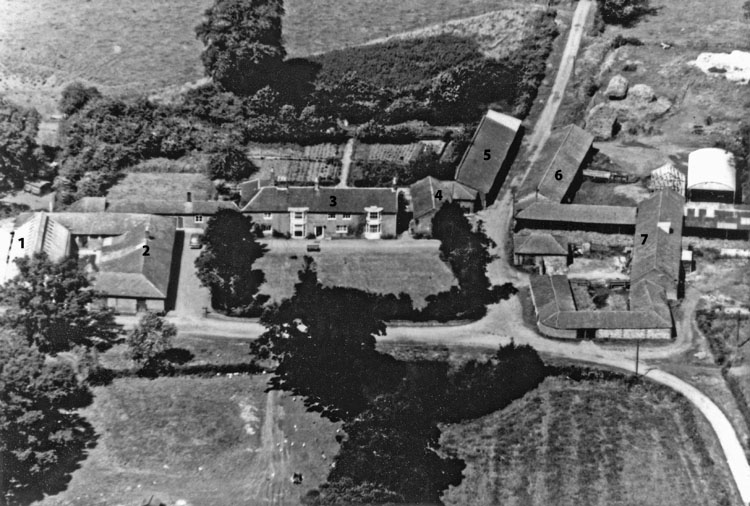
Hoe Lodge 1960s (?)
Agnes Young became a teacher. On
the back of this aerial view of
the farm she has written:
On the extreme left is the cowshed
[1]
Across the yard from the cowshed
the calves' boxes, potato house
and garage [2].
In the centre is the house [3]. My
bedroom is the right-hand upstairs
bay window.
Then a few calves' boxes [4].
Cartshed [5] on the left of the
road and straight across from
that, the stable [6] in which
Mummy keeps the chickens.
The rest is just yards and in the
middle, the barn [7].
Agnes adds for her friend 'If you
look carefully you can see I have
numbered the places on the
photograph - hold it slantwise.'
And, indeed, on the original
photograph are little numbers
pressed into the paper with a
pencil.
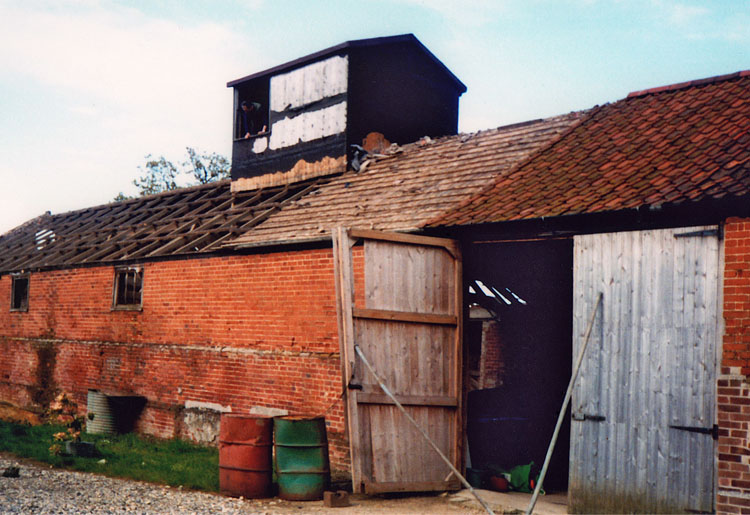
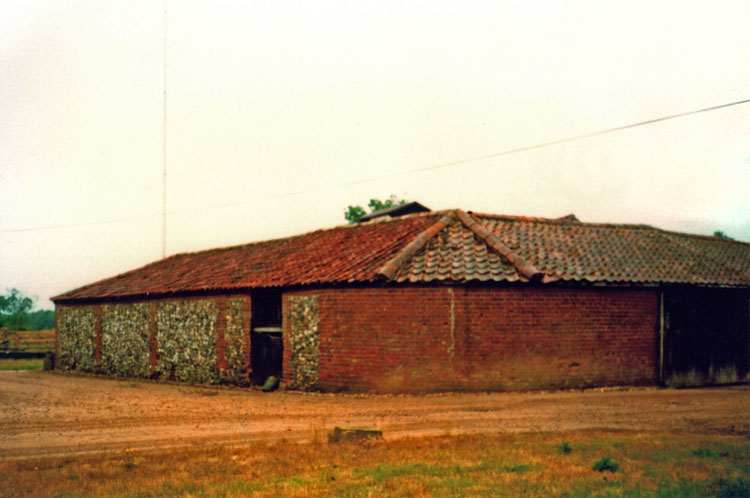
Gerald and Sally Kerry made their home
from the buildings in 1997 and farm the land.
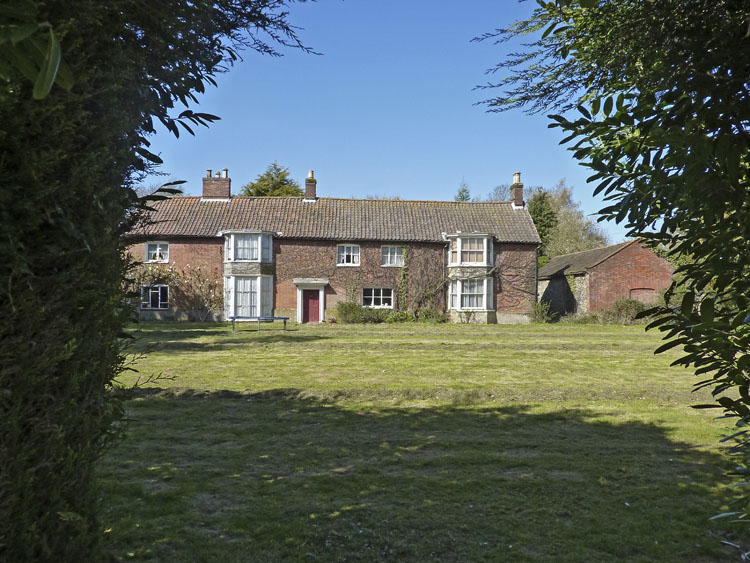
The farmhouse in 2010.
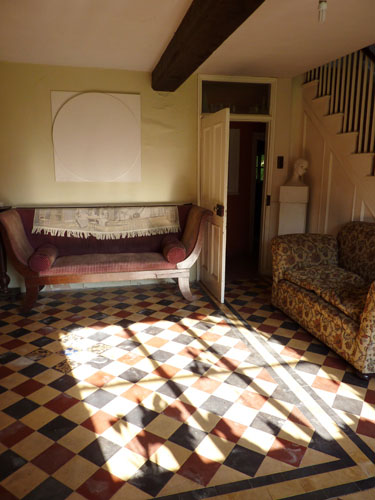 Inside the house in 2010. It
retains many original features. Inside the house in 2010. It
retains many original features.
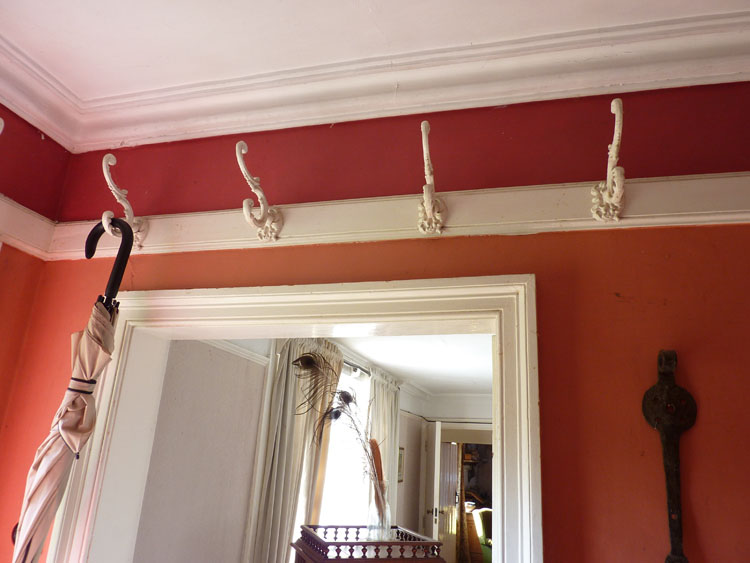 Hooks which
must be for hats.
Hooks which
must be for hats.
 The kitchen.
The kitchen.
 An old
pantry.
An old
pantry.
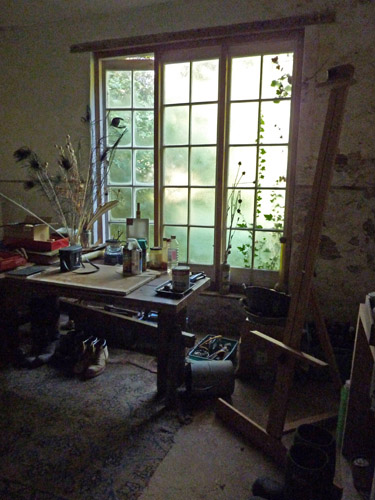 The house
was eventually sold separate from the farm land The house
was eventually sold separate from the farm land
and lived in by Brian and Barbara
Upton. Brian had a studio
for painting and Barbara had a
pottery in an outbuilding.
 A stall in
one of the stables.
A stall in
one of the stables.
|
|